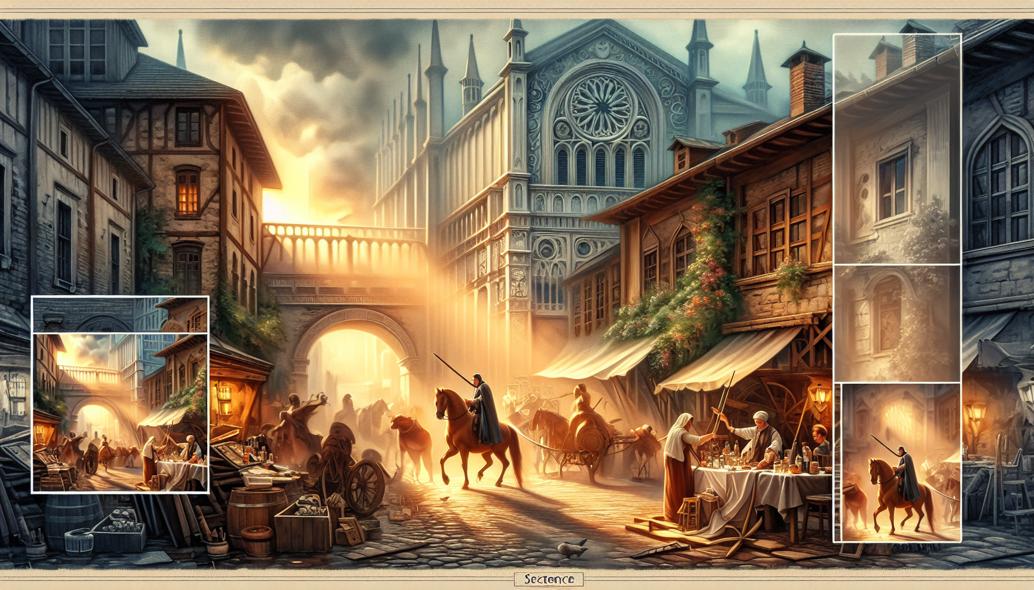Mastering Light in Watercolor: Techniques for Dramatic Effects
Unlock the secrets of watercolor lighting to transform your artwork into vivid stories. Discover advanced techniques for dramatic effects and realism that will elevate your painting skills. Dive in and let light be your guide!

Mastering Light in Watercolor: Techniques for Dramatic Effects
In the world of watercolor painting, light plays an essential role in how your artwork is perceived. Harnessing the power of Watercolor lighting can transform a flat painting into a vibrant masterpiece brimming with mood and emotion. This post delves into advanced techniques that will enable you to create Dramatic effects and achieve Realism in watercolor. Whether you're an experienced watercolorist looking to refine your skills or embarking on a new artistic challenge, understanding how to manipulate light will elevate your work to new heights.
Understanding the Interaction of Light and Watercolor
Before diving into Advanced watercolor techniques, it's crucial to grasp the fundamental interaction between light, pigment, and paper. Watercolor, by its nature, is a transparent medium. The paper's whiteness contributes to the luminosity of your colors, allowing light to penetrate and reflect back through the pigment layers, creating a glowing effect. Effective control of Light in watercolor depends on how well you can balance these transparent layers with the paper’s natural brightness.
In contrast to opaque media like oils or acrylics, where light bounces off the surface, watercolor requires a strategic subtraction of pigment to mimic the effects of light. Thus, mastery in this area is largely about what you choose to leave untouched or subtly enhance.
Techniques to Achieve Dramatic Lighting Effects
Glazing for Depth and Dimension
Glazing is one of the Advanced watercolor techniques that involves layering transparent washes of color to create depth and dimension. When applied skillfully, glazing allows you to manipulate light in your composition.
Begin with a light wash and allow each layer to dry completely before adding another. Use multiple thin layers to create a gradual transition in tones, ensuring smoother shifts in light and shadow. This technique is ideal for areas needing rich color depth without losing the luminosity of the underlying layers.
Working with Negative Space
Negative painting involves painting around an object to define its shape through the contrast between the subject and the background. This technique is particularly effective in emphasizing light sources and adding Dramatic effects to your work.
Start by identifying the highlights in your composition. These are areas you'll leave untreated or with minimal pigment application. Gradually build around these light areas with darker tones, giving your painting a sculpted and realistic appearance.

Employing Wet-on-Wet for Soft Glows
Utilizing the wet-on-wet technique gives watercolor paintings their signature softness. To create ethereal glows or soft transitions from light to shadow, apply a wet wash of color to an already damp area of your painting.
This method works beautifully for depicting light through mist, fog, or subtle changes in lighting conditions. Be cautious of overworking wet areas; patience and practice will help you achieve the desired effect without muddying your colors.
Capturing Realistic Highlights
Accurate depiction of highlights is crucial for conveying Realism in watercolor. One popular technique for highlighting involves reserving the white of the paper. Alternatively, you can use masking fluid to protect specific areas before applying washes.
Refining highlights may also involve lifting out color with a clean, damp brush or using scratching tools for crisply defined accents. Precision is key here; these highlights should reflect a natural interaction with the light source in your scene.
Advanced Techniques for Experts
Atmospheric Perspective and Its Role in Lighting
Atmospheric perspective refers to the change in color and clarity that objects exhibit at different distances. To manipulate Light in watercolor effectively, depict distant objects with cooler, lighter hues, and reduced contrast compared to those in the foreground. This not only adds depth but also enhances how light permeates through your scene, adding to the overall impact of your painting.
Light Direction and Focal Points
Plan the focal points of your composition by considering the direction and quality of light. Decisive light placement guides viewers' eyes, creating Dramatic effects that lead to more engaging visuals.
Use a combination of techniques, such as increased contrast or intense color saturation, to highlight focal areas. This will not only underscore the importance of the chosen light source but also underline the narrative in your artwork.
Exploring Temperature Contrasts
Color temperature is a powerful tool in establishing mood and evoking emotion. Warm and cool contrasts not only define objects but also breathe life into your painting’s light environment.
Experiment with warm lights paired against cool shadows or vice versa. The dynamic play between these temperatures can unlock new dimensions in your work, offering compositions that are as compelling as they are technically sound.
Conclusion
Mastering the interplay of Watercolor lighting and manipulating it to produce Dramatic effects is an art form that requires both patience and practice. By leveraging techniques such as glazing, negative space painting, wet-on-wet, and atmospheric perspective, you can enhance your ability to convey Realism in watercolor paintings.
As you integrate these Advanced watercolor techniques into your skill set, remember that experimentation and exploration are vital. Every completed painting is a step toward deeper mastery, revealing the inherent beauty of watercolor and your unique artistic voice. Continue refining your approach, and watch as your ability to capture and transform light evolves into a powerful storytelling tool.
